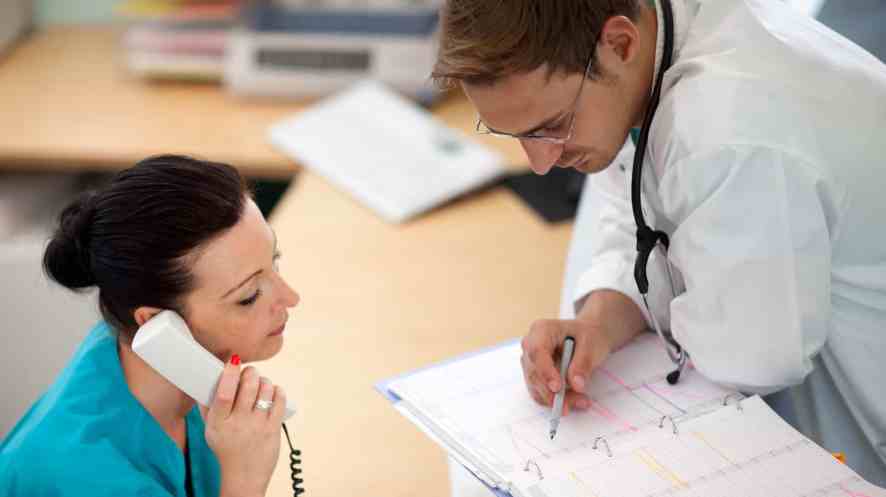
Bringing together comprehensive yet student-friendly coverage of medical assisting competencies and a solid foundation of anatomy and physiology, Today’s Medical Assistant: Clinical & Administrative Procedures, 4th Edition provides everything your students need to successfully begin a career as a medical assistant. With enhanced coverage of healthcare law, certification, electronic health records, office management, and more, students will be fully prepared for tomorrow’s professional landscape. Digital tools like videos that accompany the text also allow students to practice skills at home.
Co-authors Kathy Bonewit-West, BS, MEd, and Sue Hunt, MA, RN, CMA (AAMA), CCMA, share their insights to the field of medical assisting highlighted in their new edition.
What skills do you think will be the most important for today’s students to learn when it comes to medical assisting?
KBW: The clinical skills that are most important for today’s medical assistant are those that are performed most frequently in the medical office, which include a thorough knowledge of the theory and procedures for measuring vital signs (T,P, R, and BP), pulse oximetry, and height and weight. The medical assisting student must be able to perform these skills with confidence and adeptness using both manual, and when applicable, automatic methods.
SH: As far as administrative skills are concerned, by far the most important at the moment is the electronic health record. (EHR) If medical assisting students use some kind of EHR in their training (like SimChart for the Medical Office), they are much better prepared for the ways things are done in modern medical practices.
How can educators help students strengthen their clinical skills and put the patient first?
KBW: The best means of strengthening clinical skills is to practice them thoroughly until competency is attained. Educational tools in Today’s Medical Assistant that assist in ensuring competence include step-by-step procedures, including the principle for performing each step along with numerous illustrations. Of upmost important are the videos available through Evolve resources that accompany most of the procedures. Today’s Medical Assistant is unique in that the videos follow the procedures set forth in the textbook exactly, rather than being generic video procedures. Another advantage of the videos is that they are available to the students, not just the instructor. In this way, the student can view the video at home as many times as desired to assist him or her in becoming competent in a procedure.
SH: I am a big proponent of anything that encourages students to focus on the other person (such as the patient) and to take responsibility for patient understanding. I like to use games where students are put in pairs, with one assigned to be the leader and the other student asked to follow, each of them doing exactly what the other is doing if possible at the same time. This forces them to pay attention to the other person and really connect with them, reminding them that they are responsible for the other. When students practice skills in pairs, they should learn to critique each other and share how they felt as a “patient”. They have a tendency to focus on the instructor, especially when they are being evaluated, and the instructor needs to remind them to focus on the patient.
What changes have you seen healthcare laws over the years?
KBW: Both the CDC and OSHA regulate the safety aspects of the medical office to protect healthcare workers from occupational exposure and to prevent disease. The FDA has set forth laws governing medications. The Clinical Laboratory Improvement Amendments (CLIA) has published regulations that improve the quality of laboratory testing in the U.S. Regulations and Guidelines developed by all of these entities are presented throughout Today’s Medical Assistant.
SH: When practices were owned by physicians, medical assistants were allowed to give injections, start IVs, perform laboratory tests, put oxygen on patients, etc. Now that most practices are owned by hospitals, medical assistants must conform to hospital policy.
What does instructional technology like adaptive learning have to offer when it comes to teaching medical assisting?
KBW: Adaptive learning is of great benefit to medical assisting students. It assists students in tracking their own learning and to work at their own pace. The Evolve site provides many games and activities addressing different learning styles. This makes learning fun for the student.
What does the future of medical assisting look like to you?
SH: The trend for more aggressive management of patients with complicated medical problems by primary care practitioners means that at least in the near future, medical assistants who can help with management of these patients will be important. Medical assistants will need to know more about the underlying disease processes of diabetes, heart disease, hypertension, and chronic respiratory disease in order to assist with the management of patients with these diseases.
How have you seen curriculums change to help students better begin their careers as medical assistants?
KBW: As more and more providers become aware of the unique and versatile job qualifications of the medical assistant, they are moved into more and more responsible positions in the medical office. The medical assisting student can only reach these goals and attain competency through a quality educational program. Today’s Medical Assistant provides a strong cornerstone in building and maintaining such a program.